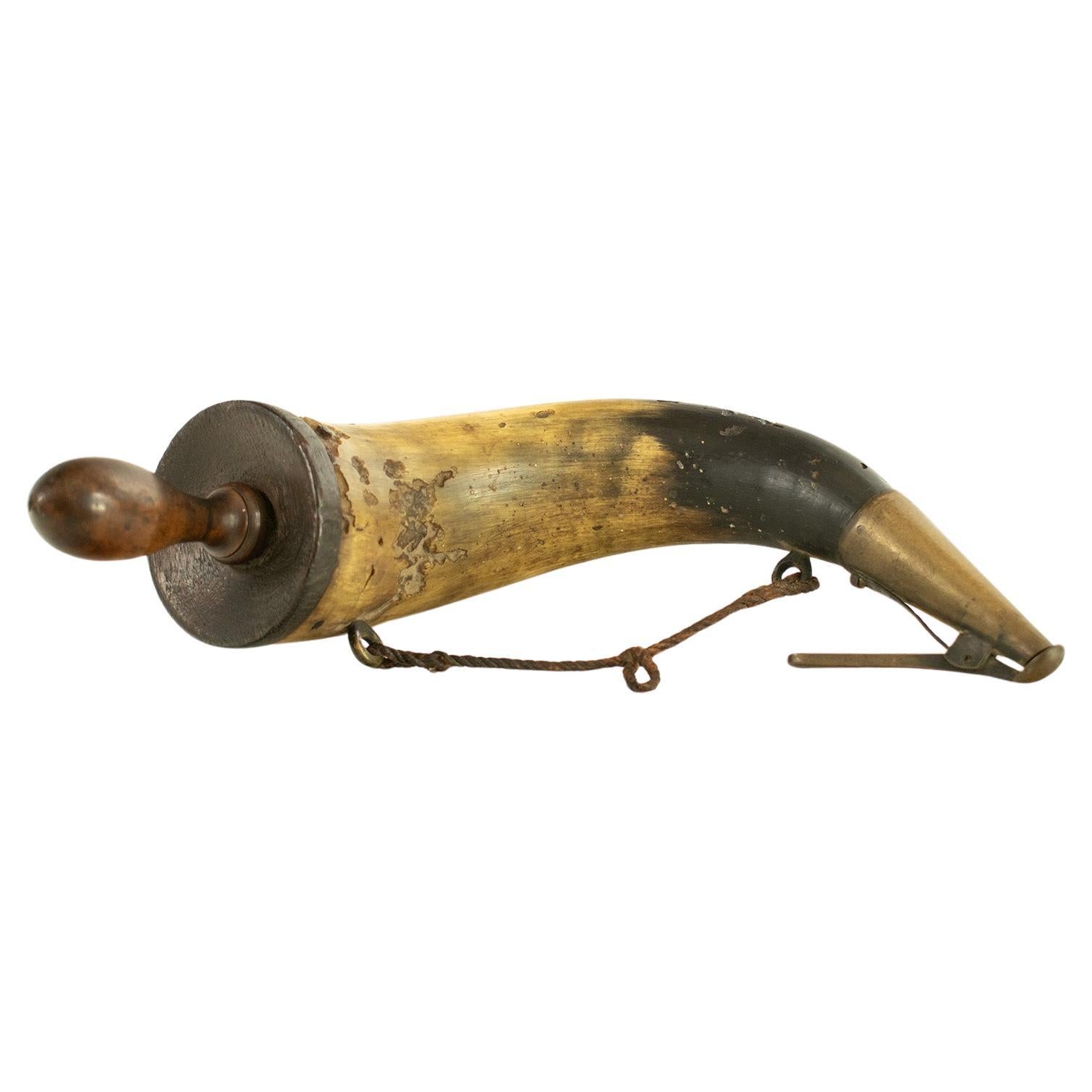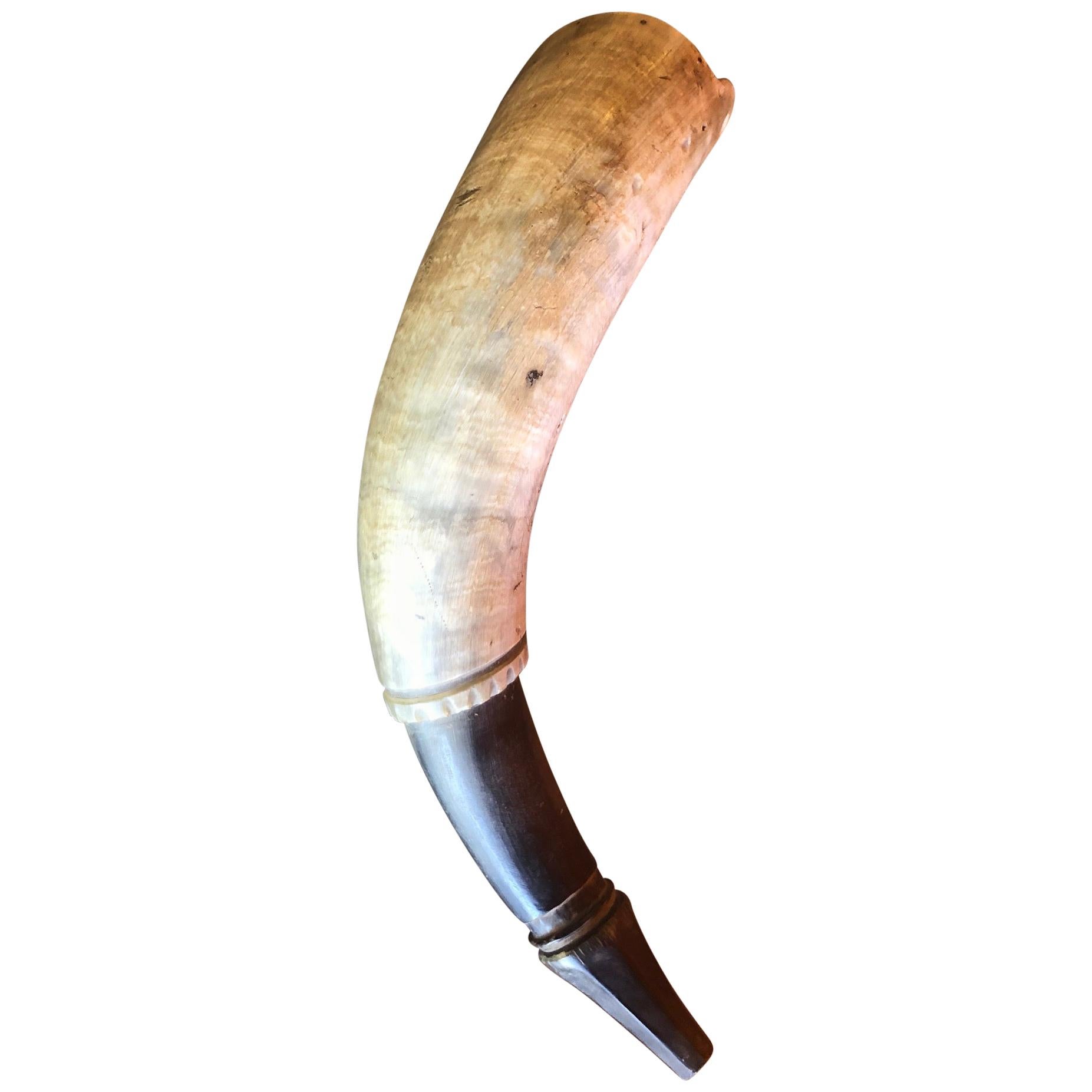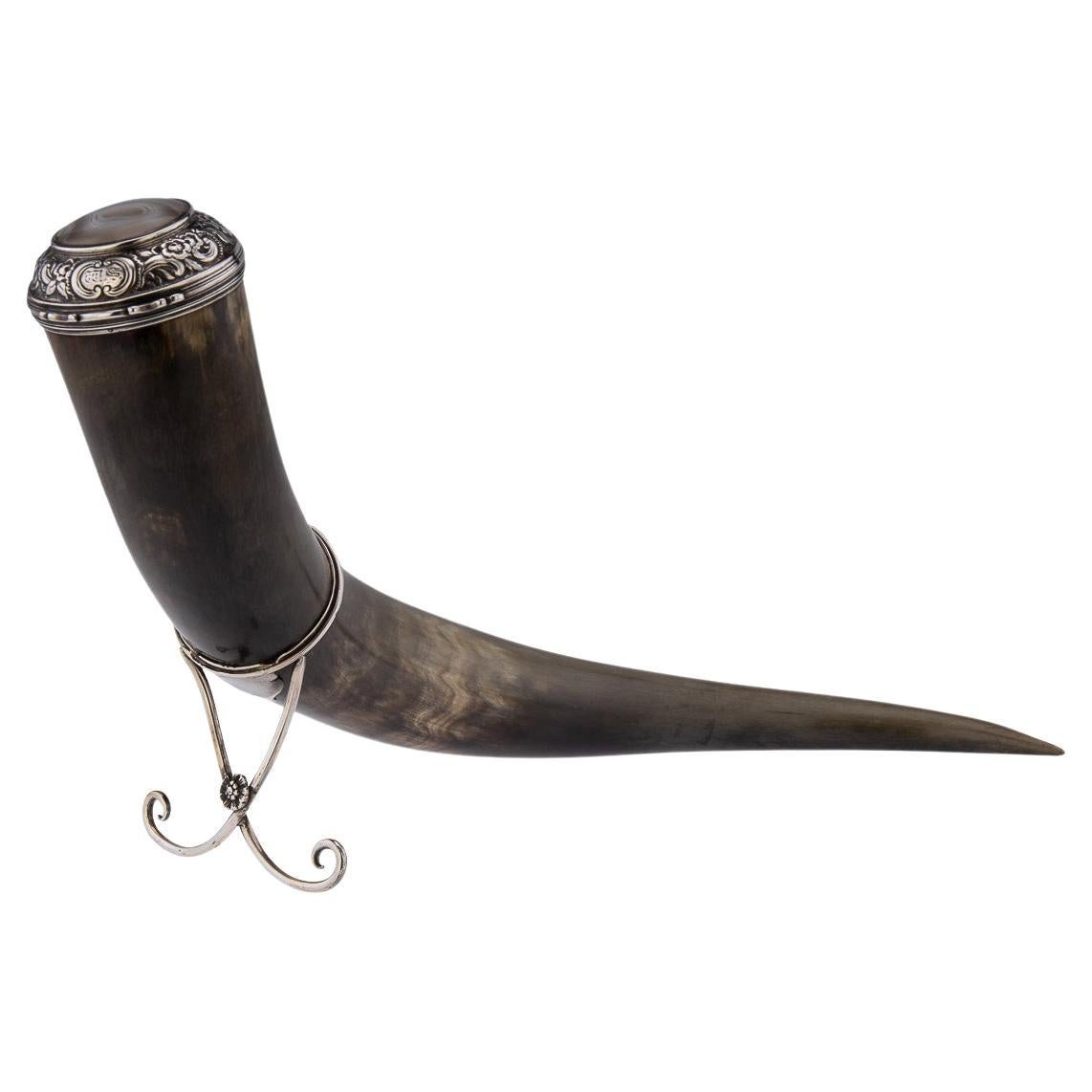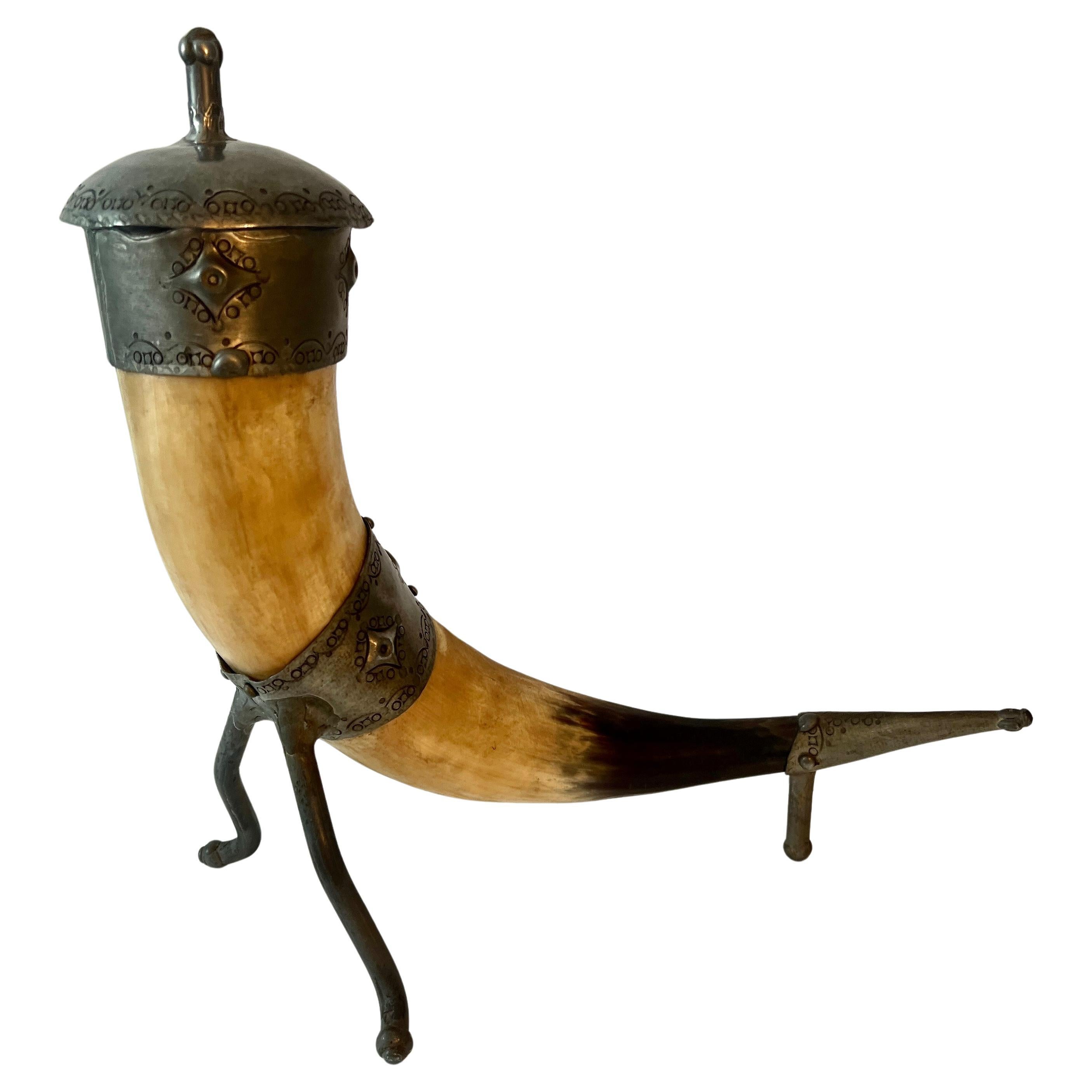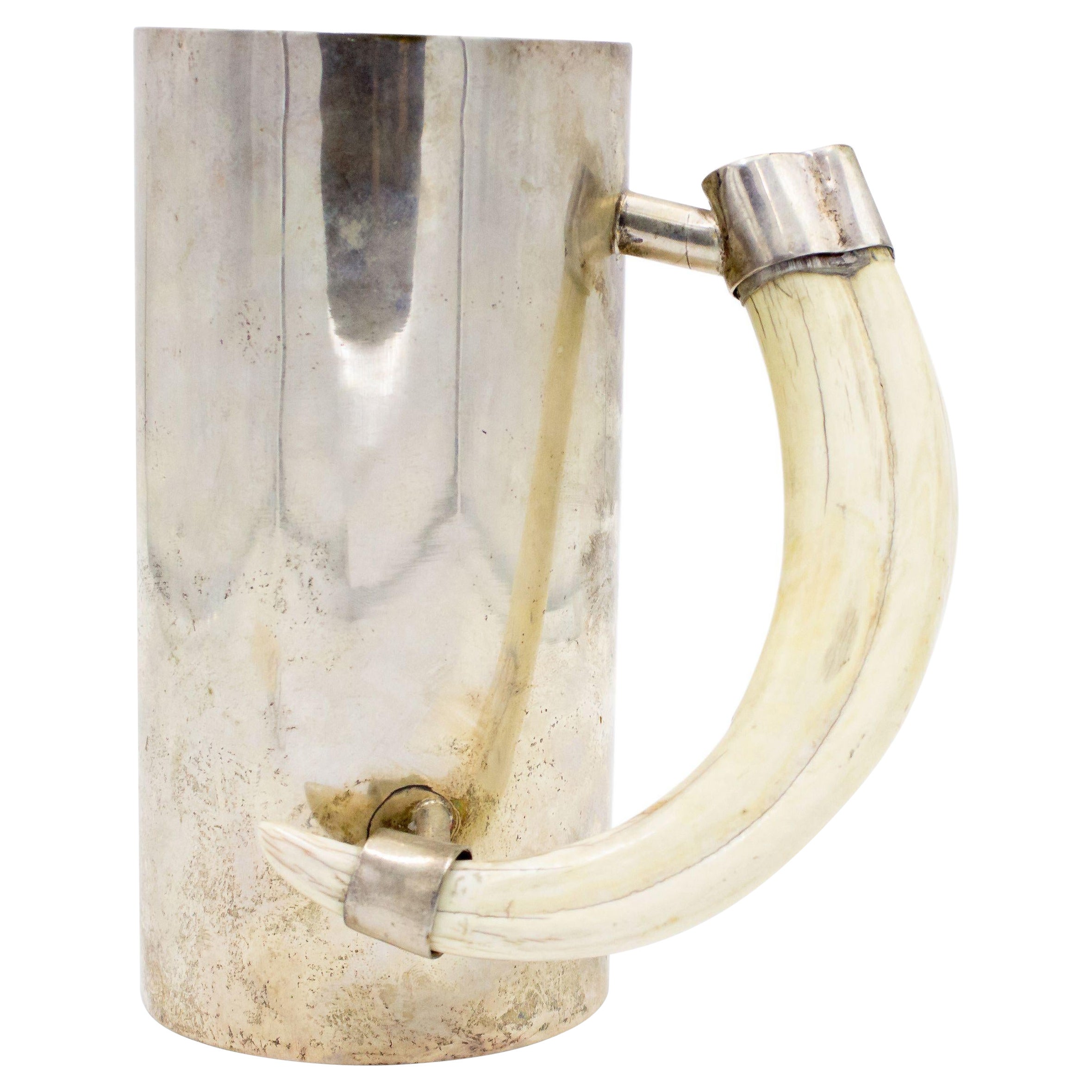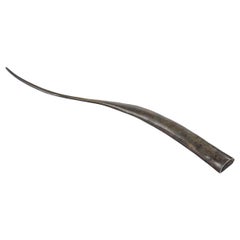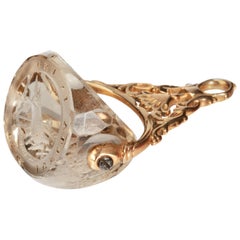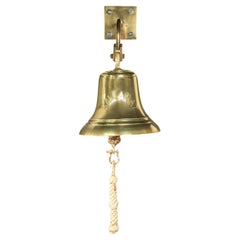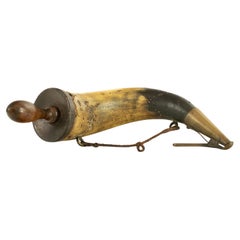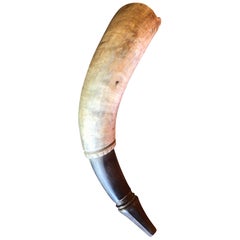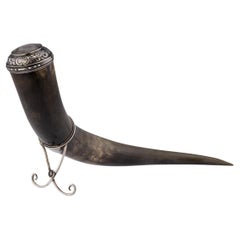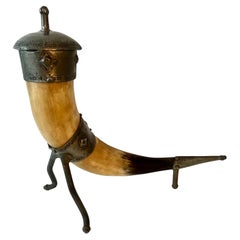Items Similar to A Very Fine and Historically Significant George III Silver Mounted Powder Horn
Want more images or videos?
Request additional images or videos from the seller
1 of 9
A Very Fine and Historically Significant George III Silver Mounted Powder Horn
$8,734.16
£6,375
€7,516.51
CA$12,034.34
A$13,400.22
CHF 7,086.35
MX$163,072.49
NOK 89,325.02
SEK 84,157.30
DKK 56,097.69
About the Item
This fine powder horn has silver mounts by the silversmiths Thomas Phipps and Edward Robinson, hallmarked for London, 1803. The charger on the horn has three adjustments and a side lever system and the wider end of the horn has a silver cap engraved with two crests, shields and family mottoes. The crests are for the Maitland and Dick families and represent the lineage of Rear-Admiral Sir Frederick Lewis Maitland. The Maitland line, represented by the lion crest and the motto Consilio et Animus represents the arms of the male line. Maitland’s father, also Frederick Lewis Maitland (1730-1786), had an interesting and successful naval career though was rather overshadowed by the later successes of his son. The martlet (small bird) crest and motto In Domino Confido is the female line, in this case Margaret Dick, daughter of Viscount Frendraught. The Dick family was important in the clan hierarchy in Scotland, being the head of Clan Crichton and heir to Clan Makgill at this time.
Provenance
Rear-Admiral Sir Frederick Lewis Maitland KCB (1777-1839) and thence by descent
Rear-Admiral Sir Frederick Lewis Maitland KCB (1777-1839)
Born in Fife, Maitland was the father of a distinguished naval officer as discussed above. Mailtand joined the navy straight from school and, whilst serving on the frigate HMS Southampton under captain Robert Forbes, he was involved in his first major action when he was present at the Glorious 1st of June in 1794. Maitland’s career advancement was swift and he earned a promotion to Lieutenant in April of 1795, serving on HMS Andromeda, and, soon afterwards, Venerable. Maitland then moved to the Mediterranean fleet in 1797 and, whilst serving on HMS Kingfisher he was awarded a £50 naval sword for his bravery, in part during the capture of a number of privateers.
Maitland became Flag Lieutenant to Lord St Vincent and was briefly captured during an attempted reconnaissance mission in Gibraltar in 1799. Having taken command of the vessel Penelope due to the sickness of the captain, he was thwarted by disobedience and bad conduct amongst the crew and the vessel was captured by the Spanish fleet. He was released due to his connection to Lord St Vincent and was promoted to Commander upon his return to active duty. He was mentioned in dispatches during the campaigns fought in 1801 and 1802.
During the Napoleonic wars, Maitland was particularly distinguished by his role in the Battle of Muros bay in 1805. His conduct on this occasion was enough to earn him the freedom of the city of Cork, thanks from the City of London and a Lloyds Patriotic Fund Sword. It is for his role as commander of HMS Bellerophon that Maitland is most remembered, however, as in 1815 he intercepted Napoleon whilst in charge of this historic vessel and the Emperor surrendered to him on the 15th of July of that year and was taken on board the ship to England.
- Dimensions:Height: 24 in (60.96 cm)Diameter: 3 in (7.62 cm)
- Style:George III (Of the Period)
- Materials and Techniques:
- Place of Origin:
- Period:
- Date of Manufacture:1803
- Condition:Wear consistent with age and use.
- Seller Location:Lymington, GB
- Reference Number:1stDibs: LU973045616632
About the Seller
5.0
Recognized Seller
These prestigious sellers are industry leaders and represent the highest echelon for item quality and design.
Established in 1982
1stDibs seller since 2013
133 sales on 1stDibs
Typical response time: 2 hours
Associations
LAPADA - The Association of Arts & Antiques Dealers
- ShippingRetrieving quote...Shipping from: Lymington, United Kingdom
- Return Policy
Authenticity Guarantee
In the unlikely event there’s an issue with an item’s authenticity, contact us within 1 year for a full refund. DetailsMoney-Back Guarantee
If your item is not as described, is damaged in transit, or does not arrive, contact us within 7 days for a full refund. Details24-Hour Cancellation
You have a 24-hour grace period in which to reconsider your purchase, with no questions asked.Vetted Professional Sellers
Our world-class sellers must adhere to strict standards for service and quality, maintaining the integrity of our listings.Price-Match Guarantee
If you find that a seller listed the same item for a lower price elsewhere, we’ll match it.Trusted Global Delivery
Our best-in-class carrier network provides specialized shipping options worldwide, including custom delivery.More From This Seller
View AllRare Scrimshaw Decorated Horn
Located in Lymington, Hampshire
A rare scrimshaw decorated horn, engraved over one side with the Royal Arms countersigned and titled ship profiles for the Great Eastern, the Great Britain,...
Category
Antique 1860s English Nautical Objects
Materials
Horn
George III Lloyds Patriotic Fund Silver and Silver Gilt Vase and Cover by Samuel
Located in Lymington, Hampshire
George III Lloyds patriotic fund silver and silver gilt vase and cover by Samuel Hennell, of Adam design, the lift-off cover with knop finial above an...
Category
Antique Early 1800s English Nautical Objects
Materials
Silver
Admiral Viscount Bridport’s Gold and Hardstone Armorial Swivel Fob Seal
Located in Lymington, Hampshire
The openwork gold pendent mount supports a three sided faceted quartz, each side seal engraved respectively with the crest of Hood within the motto ‘Tria Juncta in Uno for the Order ...
Category
Antique 1780s English Nautical Objects
Materials
Quartz, Gold
A brass ship’s bell from Peninsular & Orient liner S.S. Ballarat
Located in Lymington, Hampshire
This bronze ship’s bell is incised with the legend ‘Ballarat’ and has a suspension bracket and plaited rope bell-pull. The interior is painted white....
Category
Antique Late 19th Century English Nautical Objects
Materials
Brass
Silver Cup by Henry Wilkinson, Dated 1874
Located in Lymington, Hampshire
A silver cup by Henry Wilkinson, dated 1874, the goblet embossed and chased with seaweed fronds and seashells, applied with twisted and looped ropes around the rim, foot and blank ce...
Category
Antique 1870s English Barware
Materials
Silver
Ottoman Empire Parcel-Gilt Silver Qalamdan
Located in Lymington, Hampshire
An Ottoman Empire parcel-gilt silver qalamdan, the slender rectangular pen holder with faceted rounded ends and a hinged lid attached to a squat, square section, bombé inkwell with a...
Category
Antique Early 18th Century Turkish More Desk Accessories
Materials
Silver
You May Also Like
LARGE GUNNER'S POWDER HORN Naval - French, late 18th century.
Located in TEYJAT, FR
Original Large French Gunner's Powder Horn, Naval - French, late 18th century. Of large size used to load cannons aboard ship.
With fitted wooden plug and brass dispensing spout.
T...
Category
Antique 19th Century Arms, Armor and Weapons
Materials
Horn, Wood
19th Century Antique Powder Horn with Scrimshaw
Located in San Diego, CA
Rare 19th century antique powder horn with scrimshaw, circa 1872. The horn is inscribed "Charles Lee" in scroll on the side of the horn and the woo...
Category
Antique Mid-19th Century American Folk Art Sculptures and Carvings
Materials
Metal
$1,200 Sale Price
20% Off
19th Century Scottish Horn, Banded Agate & Solid Silver Table Snuff Mull, c.1870
Located in Royal Tunbridge Wells, Kent
Antique 19th Century rare Scottish very large table snuff mull. The name "mull" is dialect for "mill" and some snuff mulls featured divices for smashing snuff, this typical scotish d...
Category
Antique 19th Century Scottish Tobacco Accessories
Materials
Agate, Silver
19th Century Lidded Vessel or Sculptural Horn Decorated with Etched Pewter
Located in Los Angeles, CA
A wonderful Horn resting on three hand wrought pewter legs with a tip, collar and lid with hand crafted etching and details.
The horn is a compliment to any shelf, console table - a...
Category
Antique 19th Century Rustic Natural Specimens
Materials
Pewter
Silver Tankard with Boar Tusk Handle
Located in Queens, NY
English Victorian silver plate tall tankard with boar tusk handle.
Category
Antique Late 19th Century British Victorian Pitchers
Materials
Silver
Decorative Horn with Brass Closure and Brass Tip for Storage, Drinking, 420
Located in Los Angeles, CA
A beautiful horn - typically used as a drinking cup on the camp, or storage of anything from gunpowder to tobacco - today, with the addition of a beaurtiful brass hinged top and adde...
Category
20th Century English Rustic Tribal Art
Materials
Brass
